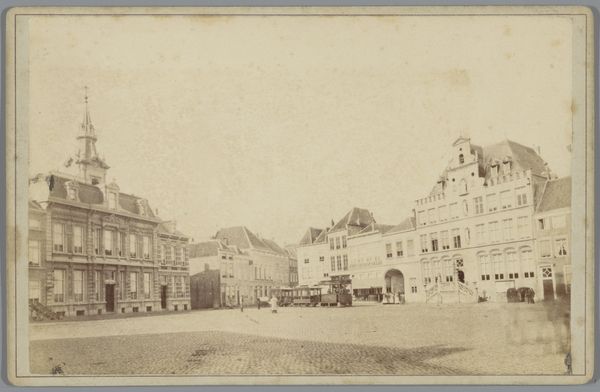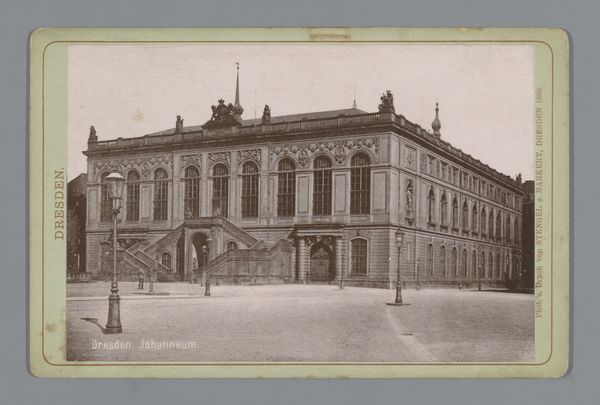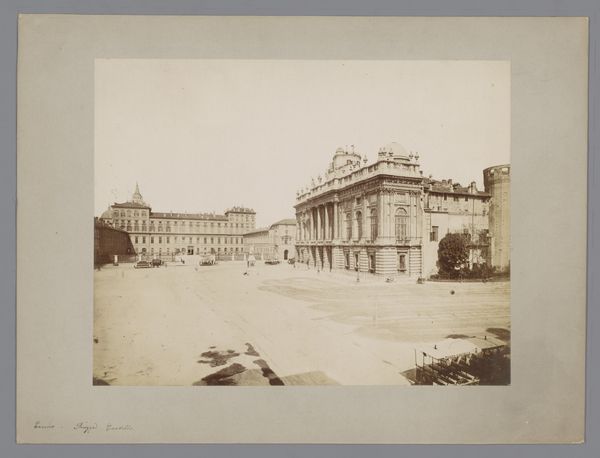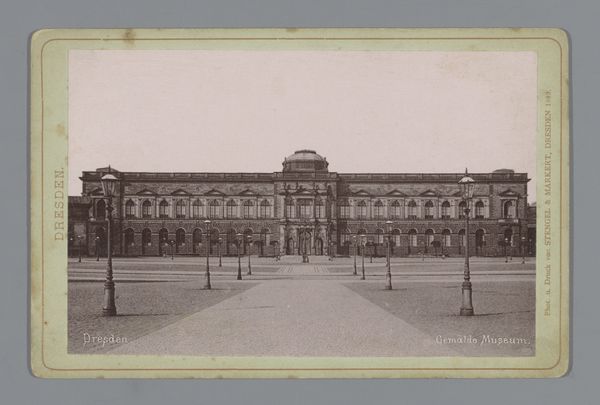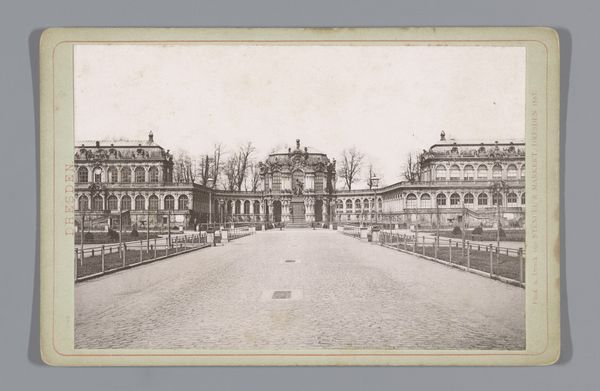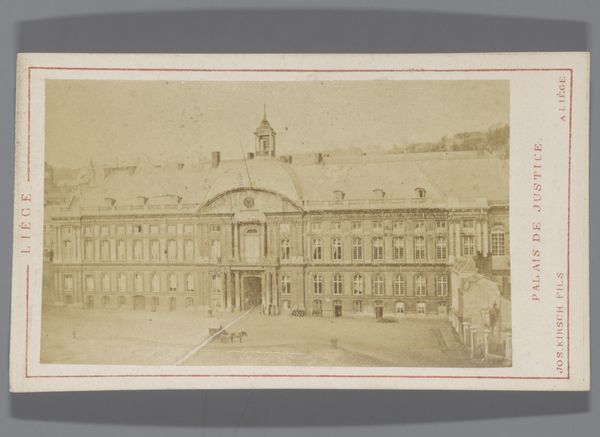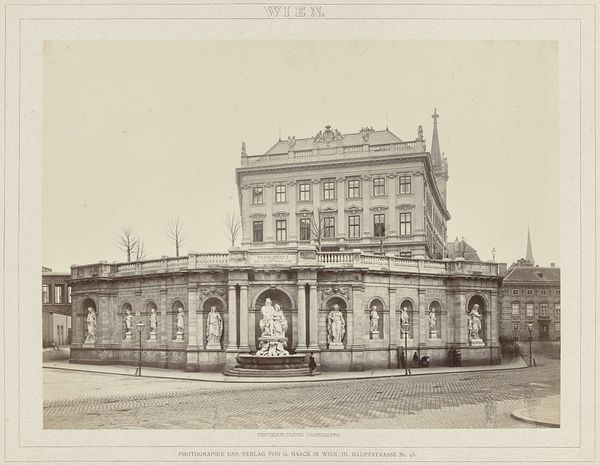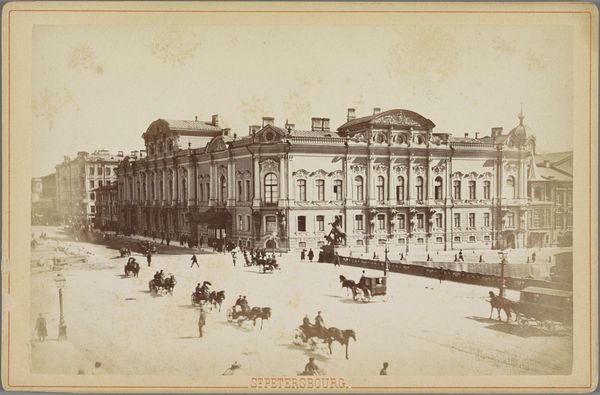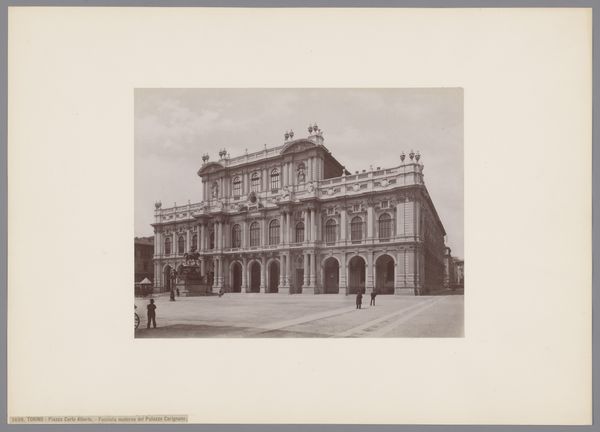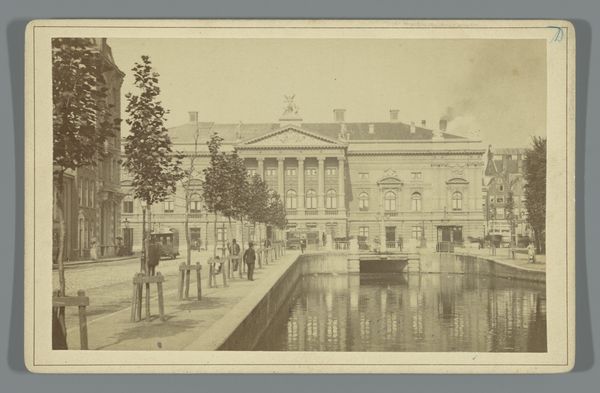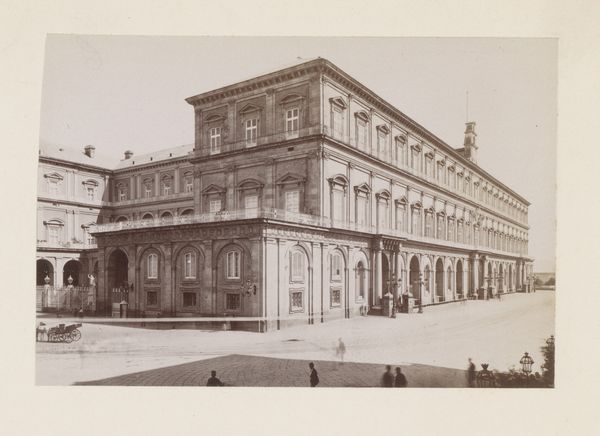
print, photography, architecture
#
16_19th-century
# print
#
landscape
#
photography
#
19th century
#
cityscape
#
architecture
#
statue
Dimensions: height 108 mm, width 163 mm
Copyright: Rijks Museum: Open Domain
Editor: Here we have a photographic print titled "Château de Compiègne" created sometime between 1880 and 1900 by A. Dupré. The sepia tone lends it an air of stately quietude, but there's a certain ambiguity; is it grand or ghostly? What strikes you most about this image? Curator: What truly resonates with me is the way this image speaks of power and permanence, but also the fleeting nature of empires. Look at the architecture itself - it’s neoclassical, echoing a lineage of rulers reaching back to antiquity. Yet, a photograph freezes a specific moment in time. Do you notice anything interesting about who *isn’t* pictured? Editor: Well, there are only a few figures, really just bystanders. I suppose the figures could represent a social class, and their placement seems deliberate...almost like they are being observed by the Chateau. Curator: Exactly! There's an almost performative aspect to monarchy; they are, at once, symbols *of* the nation and also actors *for* it. This careful staging, frozen in time, hints at the curated image monarchs cultivate. How do you think this resonates, given the photographic medium? Editor: It’s interesting to think that even then, photography was used as a tool to project an ideal of power. I guess I hadn't considered that angle before. Curator: Precisely! These images construct cultural memory. It asks, who and what do we choose to remember, and what does that reveal about our values, then and now? Editor: So, the château isn't just a building; it’s a symbol carefully crafted and preserved for posterity. That’s a fascinating insight! Curator: Indeed. And considering the dramatic political changes of the late 19th century, the photograph might signify not just authority but also the *nostalgia* for a bygone era. Food for thought, eh?
Comments
No comments
Be the first to comment and join the conversation on the ultimate creative platform.
